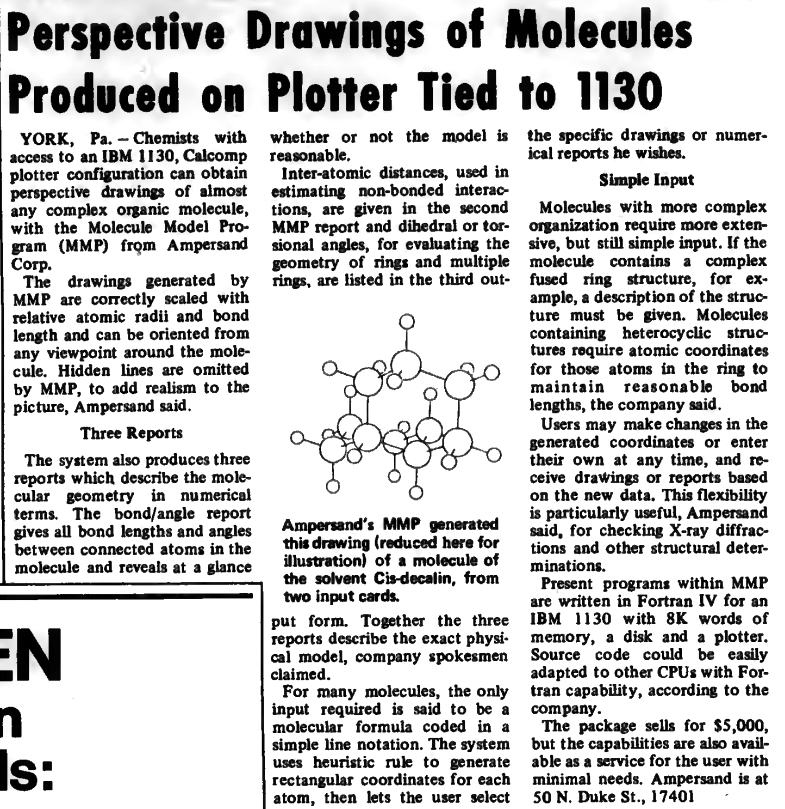Feb. 2: 1972: Chemists automate molecular drawings with computers
Computers brought the power of automation and data processing to the field of chemistry, beginning with simple tools for drawing molecules.

Over the past few decades, the field of chemistry has been completely transformed by sophisticated automation, data analysis, and artificial intelligence. Modern chemistry research relies on computer models to rapidly invent new medicines and design new materials. In 1972, chemists used the Molecule Model Program to automatically generate two-dimensional drawings and reports on the geometry of various molecules. Molecular geometry – the three-dimensional arrangement of atoms in a molecule – gives insight to many of the physical and chemical properties of a substance and is extremely useful for a multitude of chemistry problems. This type of technology has since evolved into highly accurate three-dimensional simulations of molecular structure and behavior we have today.
According to an article in Computerworld magazine, chemists would use the Molecule Model Program on an IBM 1130 combined with a Calcomp plotter machine. For most molecules, only the molecular formula was needed as input. The IBM 1130 would take input on punched cards, process the input according to the rules of the modeling program, and then pass information to the plotter, which would generate a drawing of the molecule. The program produced drawings with correct relative scale between atomic radii and bond length and could draw the molecule at any orientation.
The Molecule Model Program was a useful tool for scientific discovery. For example, chemists would use it to check the result of X-ray diffractions (a technique for studying molecular structures). However, since the Molecule Model Program was not always accurate, chemists could modify the coordinates produced by the program and generate a new drawing. They could also enter coordinates of a new molecule to visualize a brand new structure.
–By Kathleen Esfahany